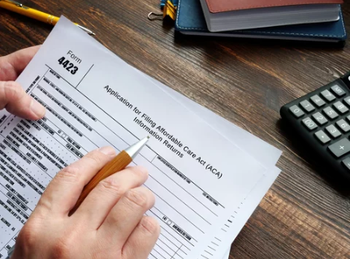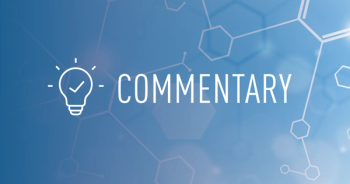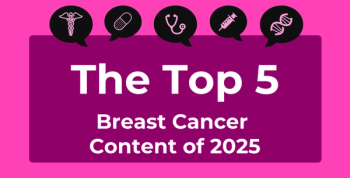
The American Journal of Managed Care
- May 2025
- Volume 31
- Issue 5
- Pages: 212-214
How Employers Can Fight the Price Crisis

Key Takeaways
This commentary, part of the Price Crisis campaign, focuses on the role of employers and business coalitions in advocating for policy change.
ABSTRACT
The US is in a health care price crisis that significantly impacts employees, employers, and public purchasers. With employer-sponsored health insurance covering 60% of Americans as of 2024, plan sponsors must consider policy advocacy as a part of their long-term cost containment strategy. Plan sponsors can leverage membership in national and regional health care business coalitions, such as The ERISA Industry Committee and the Employers’ Forum of Indiana, for policy advocacy and education at federal and state levels. Coalition successes include Texas House Bill 711, which combats anticompetitive contracting practices, and Indiana’s House Enrolled Act 1259, which enhances pricing transparency. Although navigating policy advocacy may seem daunting, Catalyst for Payment Reform emphasizes the importance of aligning public policy strategies with procurement/purchasing strategies. By engaging in tailored advocacy efforts, plan sponsors can help lower health care costs, improve access, and ensure sustainable benefits for their plan members.
Am J Manag Care. 2025;31(5):212-214.
Takeaway Points
- Employer plan sponsors are significantly impacted by the effects of the price crisis because they bear the burden of rising health care costs. This diverts resources from business investment.
- Plan sponsors have a fiduciary obligation to act in the best interest of their members.
- Market-based solutions are becoming less effective due to health care system consolidation. Policy change is the most effective long-term solution, even though it can be challenging.
- Business coalitions offer expertise and lobbying power, enabling employer plan sponsors to participate in policy change without leading efforts.
- Examples such as Texas Employers for Affordable Healthcare demonstrate the impact of coalitions in advocating for policy changes (eg, successful passing of Texas House Bill 711).
- Plan sponsors should establish a public policy strategy and review it annually in conjunction with their purchasing strategy.
Our nation is in a health care price crisis. The longer we delay action, the longer employees lose out on growing wages, municipalities struggle to stretch tax revenue, and employers become less competitive. In previous articles, Catalyst for Payment Reform (CPR) painted a picture of the price crisis1 and made the case for policy as an integral part of the solution.2 In this article, CPR focuses on how plan sponsors can effectively engage in health care policy advocacy. Plan sponsors of health care coverage are acutely aware of the financial strain that escalating health care costs place on their budgets. From 2023 to 2024, the average employee premium increased by 6% and the average family premium increased by 7%—while workers’ wages only increased by 4.5%.3 High health care expenditures divert significant resources from business4 and community investment, adversely impacting companies and local government budgets.5 As of 2024, 60% of Americans6 are covered through employer-sponsored health insurance and are thus intimately tied to their employer’s ability to manage costs. Under the Consolidated Appropriations Act (CAA) of 2021, plan sponsors have an enhanced fiduciary responsibility to act in the best interest of their plan members,7 and although advocating for state policy is not required by the CAA, it is an essential part of the recipe when considering health care cost containment strategies. Market-based solutions are increasingly proving futile as health system consolidation continues,8 and although the process to enact policy can be overwhelming, plan sponsors can be advocates without the pressure of spearheading efforts or starting from scratch. National and regional employer health care business coalitions can offer opportunities to outsource political advocacy efforts. Plan sponsors looking for long-term solutions to health care cost issues should look to these coalitions as active partners in the fight.
One Size Does Not Fit All
Organizations such as The ERISA Industry Committee (ERIC), Purchaser Business Group on Health (PBGH), Employers’ Forum of Indiana (EFI), and National Alliance of Healthcare Purchaser Coalitions (National Alliance) offer a brief glimpse into the health care business coalition landscape. A large, self-insured employer may join ERIC for lobbying support on issues related to the Employee Retirement Income Security Act of 1974 (ERISA) or PBGH for the combination of broad marketplace solutions and federal policy education, but it is critical for plan sponsors to get involved in the states where they have a significant presence as well. A large, self-insured employer should consider joining state-based coalitions because they may better understand local nuance and can design their advocacy efforts based on the state’s political climate, regional population demographics, and existing market dynamics. If the state-based coalition is a member of the National Alliance, such as EFI, Florida Alliance for Healthcare Value, or the Nevada Business Group on Health, they and their members stand to benefit from National Alliance’s research, tools, and thought leadership. CPR has emphasized state policy as a means to address local market dynamics, but a plan sponsor’s goals may include federal advocacy as well. That is why participation in multiple coalitions is an important component of a plan sponsor’s long-term strategy toward managing health care costs.
Many health care business coalitions are not-for-profit organizations. Some, including CPR, PBGH, and EFI, are set up as 501(c)(3) organizations and focus on education vs advocacy. Others, such as Texas Employers for Affordable Healthcare9 or ERIC,10 are 501(c)(4) or 501(c)(6) organizations and may pursue direct lobbying efforts with policy makers. When considering a policy education and advocacy strategy, human resources (HR) benefits staff should consider how memberships with these different types of organizations can complement each other. At CPR, we recommend building a broad portfolio of partners considering their reach (federal, state or regional, or even local), primary type of activity (education, advocacy, lobbying, etc), and organizational makeup (participation in coalitions with peers as well as a more diverse set of stakeholders, etc).
How Coalitions Engage in the Policy Fight
Employer coalitions have made significant strides in health care policy reform. In 2023, Texas Employers for Affordable Healthcare successfully championed Texas House Bill 711,11 which promotes market competition by prohibiting several anticompetitive contracting practices in health care.12 The bill bans 4 specific types of anticompetitive clauses:
- Antisteering clauses: These are clauses providers put in place with insurers that prevent plans from incentivizing enrollees to use specific providers, potentially limiting consumer choice and competition.13
- Antitiering clauses: These are clauses in which providers require employers and health plans to place all physicians, hospitals, and facilities associated with a hospital system in a more favorable benefit tier, regardless of whether all the providers in the system are high value (ie, high quality, low cost).
- Gag clauses: These are clauses providers put in place with plans that directly or indirectly limit the plan’s or issuer’s ability to share specific data and information with other parties,14 oftentimes preventing plan sponsors from making health care decisions based on general data—or even their own data.
- Most-favored-nation clauses: These clauses guarantee that a health care payer (insurer or self-funded employer) receives terms from a health care provider that are at least as favorable as those offered to any other payer.15 These clauses often protect large, entrenched players in a market and prevent new competition from entering or gaining ground.
EFI has had many successes over the past 5 years. In 2023, EFI provided education, analysis, and testimony for several provisions that were ultimately included in Indiana’s House Enrolled Act (HEA) 1004, such as prohibiting unwarranted facility fees. This measure requires Indiana’s 5 largest hospital systems to bill for health care services provided at off-campus hospital outpatient offices on an individual provider form rather than an institutional (facility) form.16 EFI’s focus on data transparency helped advocates in the adoption of Indiana’s HEA 1259 in 2024, which includes provisions for improved access to claims data for plan sponsors and allows them or their designates to conduct unfettered audits of pharmacy benefit managers and third-party administrators.17 These measures are designed to give plan sponsors necessary tools to hold their health care partners accountable, aligning with EFI’s objectives for equitable pricing practices and improved transparency.16
At the federal level, coalitions such as ERIC advocate for the upholding and strengthening of ERISA18 as well as initiatives that are grounded in a commitment to market-based solutions that encourage healthy competition among providers, health plans, drug manufacturers, and suppliers. In 2019, ERIC achieved a significant legislative victory when Congress repealed the Affordable Care Act’s “Cadillac tax” (ie, a 40% excise tax) on high-cost employer-sponsored health insurance. After a decade of opposition,19 ERIC collaborated with more than 1000 organizations20 to advocate for the full repeal of the tax. This effort culminated in the passage of the Middle-Class Health Benefits Tax Repeal Act of 2019, which was included in a broader legislative package and ultimately signed into law by President Donald Trump in December 2019.
CPR is no exception and has had a long history of educating different stakeholders on myriad policy issues including price transparency, the impact of consolidation, and rising commercial prices. In the last few years, we have created a suite of state policy menus21 for coalitions to use in their advocacy efforts to put downward pressure on commercial health care prices, and we have tested the appetite for such policy reforms in Florida, Michigan, and Nevada.22
Where to Start?
As a plan sponsor, it may feel a bit overwhelming to even think about advocating for a specific policy when you’re just trying to ensure that the day-to-day operations of the benefits programs are running smoothly. A good place to start is aligning the development of your public policy strategy with your purchasing strategy. Each year, when you’re establishing your annual procurement plan, review your public policy plan too. Some questions to ask yourself include:
- Does our organization participate in health care business coalitions at the local, state or regional, and federal level? Why or why not?
- Does one team member or a small subset of team members drive those efforts, or is there opportunity to share the responsibility for growth and leadership opportunities?
- How informed and engaged is our governmental affairs team about the challenges for employer-purchasers in health care? Is it time to reeducate and/or reengage them on the current state of health care prices and issues? Are there opportunities to engage them in health care business coalitions’ efforts?
- Does our organization have an established process for signing on to support a proposed bill or other policy? Is the process transferable from our regular business issues to health care?
- Generally, which health care policy subjects are of interest to our organization as a health care purchaser? (Create a list and review it as part of the annual strategy.)
- Is there a policy proposal that we can cite that is expected to have a positive impact and would have been important to publicly support this past year? Is there an imminent policy proposal to which we can sign on?
With time and intention, your policy strategy will be as well-oiled of a machine as your day-to-day benefits operations.
Conclusions
Engaging in policy advocacy is not a one-size-fits-all strategy, and an employer, large or small, does not have to do it alone. Current HR benefits leaders should consider the questions above and determine how best to proceed. National and regional organizations like those cited in this article, including CPR, are eager to educate on or advocate for policies that lower health care costs, expand access, and enhance quality. For too long, employers’ voices have been siloed and quiet. It’s time to be heard.
Author Affiliations: Catalyst for Payment Reform (TN-P, RO).
Source of Funding: None.
Author Disclosures: Ms Nugent-Peterson and Mr Olmstead are employed by Catalyst for Payment Reform, which will be seeking funding for the Price Crisis project from foundations and other donors. The research by Catalyst for Payment Reform referenced in this article was funded by Arnold Ventures.
Authorship Information: Concept and design (TN-P, RO); analysis and interpretation of data (TN-P); drafting of the manuscript (TN-P, RO); critical revision of the manuscript for important intellectual content (TN-P, RO); administrative, technical, or logistic support (TN-P); and supervision (TN-P).
Address Correspondence to: Torie Nugent-Peterson, Catalyst for Payment Reform. Email: tnugentpeterson@catalyze.org.
REFERENCES
1. D’Andrea G, Nugent-Peterson T. It’s time to address our nation’s health care price crisis. Am J Manag Care. 2024;30(9):401-403. doi:10.37765/ajmc.2024.89598
2. Caballero A, Nugent-Peterson T. The health care price crisis needs policy solutions. Am J Manag Care. 2024;30(12):644-646. doi:10.37765/ajmc.2024.89636
3. Consumer Price Index historical tables for U.S. city average (1967=100). US Bureau of Labor Statistics. Accessed March 14, 2025.
4. Hager K, Emanuel E, Mozaffarian D. Employer-sponsored health insurance premium cost growth and its association with earnings inequality among US families. JAMA Netw Open. 2024;7(1):e2351644. doi:10.1001/jamanetworkopen.2023.51644
5. Brot-Goldberg Z, Cooper Z, Craig SV, Klarnet LR, Lurie I, Miller CL. Who pays for rising health care prices? evidence from hospital mergers. National Bureau of Economic Research working paper 32613. June 2024. Updated December 2024. Accessed March 14, 2025.
6. Employer-sponsored health insurance 101: who is covered by employer-sponsored health insurance? In: Altman D, ed. KFF’s Health Policy 101. KFF; May 28, 2024. Accessed March 14, 2025.
7. CAA Compliance: 4 Things Employers Must Do Before Jan 1st: Toolkit for Employers. The Leapfrog Group; 2021. Accessed March 6, 2025.
8. Levinson Z, Godwin J, Hulver S, Neuman T. Ten things to know about consolidation in health care provider markets. KFF. April 19, 2024. Accessed March 5, 2025.
9. Meet our team. Texas Employers for Affordable Health Care. Accessed March 5, 2025.
10. 2022 Form 990 for ERISA Industry Committee (ERIC). Cause IQ. Accessed March 17, 2025.
11. Miller C. A solution to make TX’s health care markets healthy. Texas 2036. August 24, 2023. Accessed March 15, 2025.
12. HB 711 press release: major healthcare reform passes legislature. Texas Employers for Affordable Health Care. News release. June 5, 2023. Accessed March 7, 2025.
13. Provider contracts. The Source on Healthcare Price and Competition. Accessed March 15, 2025.
14. Our record of success. Texas Employers for Affordable Health Care. Accessed March 5, 2025.
15. Sznol E. Issue brief: most favored nation clauses. The Source on Healthcare Price and Competition. June 19, 2015. Updated September 2020. Accessed March 7, 2025.
16. 2023 Indiana legislative health summary. Employers’ Forum of Indiana. May 18, 2023. Accessed March 17, 2025.
17. 2024 Indiana legislative healthcare summary. Employers’ Forum of Indiana. March 20, 2024. Accessed March 17, 2025.
18. ERIC wins. The ERISA Industry Committee. Accessed March 5, 2025.
19. Employers call on Congress: finish the job on surprise billing, Cadillac tax this year. News release. The ERISA Industry Committee. December 14, 2019. Accessed March 5, 2025.
20. Cadillac stakeholder letter. The ERISA Industry Committee. December 5, 2019. Accessed March 17, 2025.
21. The case for multifaceted public policy intervention issue briefs 1-6. Catalyst for Payment Reform. 2023. Accessed March 14, 2025.
22. State of Healthcare: Policy Considerations to Constrain Commercial Prices. Catalyst for Payment Reform; fall 2024. Accessed March 14, 2025.
Articles in this issue
Newsletter
Stay ahead of policy, cost, and value—subscribe to AJMC for expert insights at the intersection of clinical care and health economics.










































